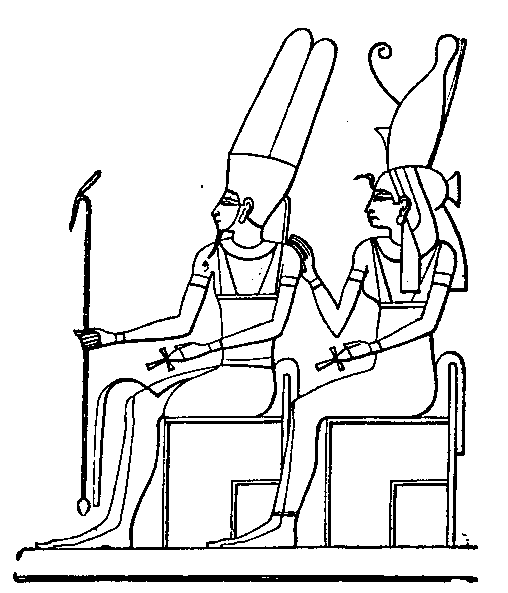|
Dictionary: Search the Dictionary Browse the Dictionary |
|
Timeline: Launch Interactive Timeline |
| Return to Front Page |
| AMMON | |
| Form: or Hammon; Egyptian Amun, the hidden or veiled one. | |
Deprecated: Function split() is deprecated in /www/www-ccat/data/classics/myth/php/tools/dictionary.php on line 64 A god native to Libya and Upper Egypt. He was represented sometimes in the shape of a ram with enormous curving horns, sometimes in that of a ram-headed man, sometimes as a perfect man standing up or sitting on a throne. On his head was the royal emblems, with two high feathers standing up, the symbols of sovereignty over the upper and under worlds; in his hands were the sceptre and the sign of life. In works of art his figure is coloured blue. Beside him stands the goddess Muth (the "mother," the "queen of darkness," as the inscriptions call her), wearing the crown of Upper Egypt or the vulture-skin (see cut). His chief temple, with a far-famed oracle, stood in an oasis of the Libyan desert, twelve days' journey from Memphis. Between this oracle and that of Zeus at Dodona a connexion is said to have existed from very ancient times, so that the Greeks early identified the Egyptian god with their own Zeus, as the Romans did afterwards withtheir Jupiter; and his worship found an entrance at several places in Greece, at Sparta, Thebes, and also Athens, whence festal embassies were regularly sent to the Libyan sanctuary (see THEORIA). When the oracle was consulted by visitors, the god's symbol, made of emerald and other stones, was carried round by women and girls, to the sound of hymns, on a golden ship hung round with votive cups of silver. His replies were given in tremulous shocks communicated to the bearers, which were interpreted by a priest. |
|
|
|
|
| Pictures and Media | |
| AMMON AND MUTH. |

|
|
Copyright 2000-2020 Peter T. Struck. No portion of this site may be copied or reproduced, electronically or otherwise, without the expressed, written consent of the author. |